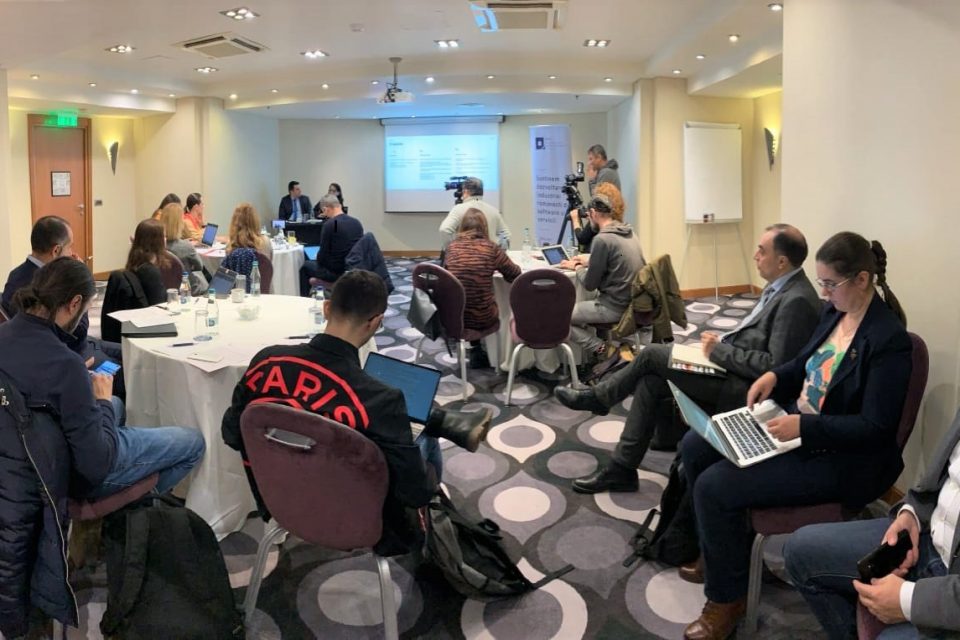ANIS: Local IT market reaches near 6 billion Euro in 2019, 80 per cent is represented by exports

A study conducted by The Employers’ Association of the Software and Services Industry in Romania (ANIS) states that local IT market is estimated to reach near six billion Euro by year end, with 80 per cent represented by exports. According to ANIS’ estimates, 200.000 people work in IT in Romania, however, only one third of them are graduates of specialized IT faculties.
The workforce offer in the industry increases by 10 per cent yearly still, the demand is much higher. According to the mentioned study developed by ANIS, the volume of the local IT market has increased in recent years with a relatively constant rate of about 500 million euros per year. By the end of 2019, ANIS estimates a volume of 5.9 billion euros, of which 4.8 billion euros represent the software and services segment, and 1.1 billion other activities in the IT market. In this context, ANIS estimates the annual growth rate to be maintained, reaching 25 per cent by 2022, respectively a volume of 7.3 billion Euro.
Half of the entire volume, respectively, 2.7 billion Euro is generated by large companies, mostly multinationals with over 250 employees, followed by small companies with up to 50 employees – many of them being start-ups – with 2.1 billion Euro contribution to the market volume. The medium-sized companies (50-250 employees) contribute with 1.2 billion Euro.
Geographically, Bucharest contributes 63 per cent of revenues, and the other important regions are North West with a weight of 18 per cent, West with 5 per cent, the central area with 6 per cent and North-East with 5 per cent.
“The software and services industry register a steady growth lately, both in terms of revenue and number of employees, despite the fiscal and political unpredictability that dominates the local landscape. In order for this sector to maintain the same growth rate, ANIS recommends the preservation of investments and public and private initiatives in strategic areas such as education and innovation, with the aim at supporting the medium and long term development of the software and services industry locally,” said Teodor Blidăruș, President of ANIS.
Regarding the exports, this segment is estimated to reach 78 per cent within the local IT market in Romania. In comparison, the exports share within the total volume were calculated at 72 per cent in 2018 and 65 per cent in 2017.
The IT services developed for the foreign markets represent 19 per cent of Romania’s total exports in 2019, an increasing value compared to 2018 (17 per cent) and 2017 (15 per cent). This trend is based on an undersized internal market, caused by the low degree of digitalization of the administration, respectively the adoption of the technology on a very small scale in the Romanian companies, compared to the EU average. For example, according to Eurostat data, only 43 per cent of Romanian companies own a website, which places Romania on the last place in the EU, where the average is 77 per cent. Also, at the bottom of the ranking, on second to last place, only 10 per cent of Romanian companies using cloud services, the average in the EU being 26 per cent. Moreover, only 17 per cent of companies have implemented ERP solutions, and at EU level the average is 34 per cent.
In terms of IT competitiveness, the North-Western part of Romania is expected to balance the Bucharest and Ilfov counties and the number of specialists is expected to increase in that area.
The Investments in the field, another benchmark for the market evolution, are experiencing an average growth of around 20 million Euro per year. However, the climate of political instability generated by the movement of contributions from employers to employees (and supported by employers) has also affected this segment, causing a decrease of investments of 10 million euros in 2018. However, according to ANIS estimates, this indicator can see a constant increase, given the current legislative status.
“Therefore, in order to maintain and develop a strong IT industry, which will continue to generate remarkable results, the state authorities must continue to support both foreign investments, especially small and medium-sized companies in Romania, which need a predictable climate, respectively of fiscal measures and economic conditions that encourage progress ”, added Gabriela Mechea, Executive Director of ANIS.
















